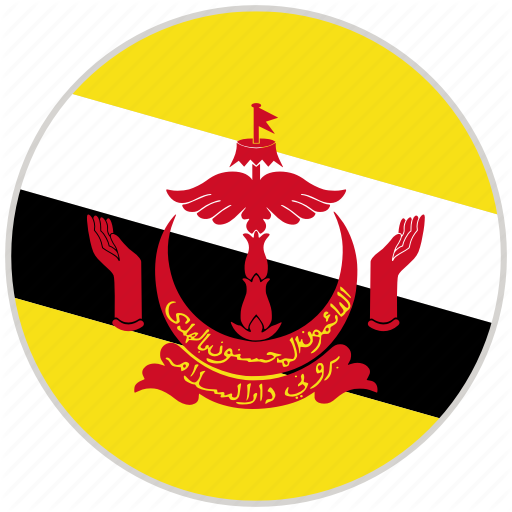Memorandum No. 5
The Network of East Asian Think-tanks (NEAT)
Policy Recommendation on
"Strengthening Cooperation and Consolidation towards Closer Integration"
Introduction
1. The Network of East Asian Think-Tanks (NEAT)held its 9th Country Coordinators’ Meeting (CCM) and the 6th Annual Conference (AC) from 24 – 25 August 2008 at Sanur Beach Hotel, Bali, Indonesia. The two events were attended by participants from the academia and government.
2. The theme of the 6th AC was “Strengthening Cooperation and Consolidation towards Closer Integration”. It highlighted the efforts to strengthen cooperation and consolidation both among and within each NEAT member country.
3. The NEAT reaffirms that the goal of community building in East Asia should be to promote the welfare and well-being of the people and realize the East Asian Vision of Peace, Prosperity and Progress. Community building should be based on universal values including good governance, the rule of law, democracy, human rights, and international law and norms. East Asian countries should promote these values as common goals.
Recommendation
4. NEAT submits recommendations from its working groups in the following five areas for the consideration of the ASEAN Plus Three Summit.
-
East Asian Financial Cooperation
-
East Asian Investment Cooperation
-
Enhancement of Cultural Exchange in East Asia
-
East Asian Environmental Cooperation
-
Future Direction of NEAT
The recommendations are as follows:
A. East Asian Financial Cooperation
5. Improve the policy dialogue mechanism and establish an executive body for East Asian financial cooperation. Ajoint mechanism of finance ministers and central bank governors and an Executive Secretariat should be established. The finance ministers and central bank governors shall jointly meet 2-4 times a year to coordinate efforts and make key decisions concerning regional financial cooperation; the Executive Secretariat shall implement the joint decisions and monitor the implementation process.
6. This Executive Secretariat may have four departments, respectively (i) providing surveillance and advice of a member’s economic and monetary policies, (ii) managing pooled foreign exchange reserves for crisis lending, (iii) promoting financial—particularly bond—market development, and (iv) monitoring and evaluation of currencies and exchange rates. The Executive Secretariat will keep close contact with member governments’ ministries, agencies and central banks, and work closely with other existing cooperative mechanisms.
7. Strengthen cooperation between financial authorities and private financial institutions, including stock exchanges, in East Asia. Ahigh-level “Asian Forum on Financial Stability” participated by finance ministries, central banks and financial sector regulators/supervisors should be established. Its major task is to conduct financial-sector surveillance. This forum should work with private financial institutions as dialogue partners in order to come up with a set of regionally consistent regulatory and supervisory structures.
8. Enhance coordination of major economies, especially that between China and Japan, in East Asian financial cooperation. The promotion of East Asian financial cooperation shall be incorporated as an important part into the building of a Sino-Japan strategic partnership for mutual benefits. The Sino-Japanese High-level Economic and Financial Dialogue could strengthen coordination in financial surveillance and in macroeconomic policies. The two countries can also strengthen coordination in the management and operation of their respective foreign exchange reserves, launch a joint comprehensive study on an Asia Currency Unit or and Asia Currency Index, and strengthen coordination in the building of Asian bond markets and cooperation of East Asian financial authorities.
B. East Asian Investment Cooperation
9. Promote investment cooperation for East Asian infrastructure development. Expanded investment cooperation for East Asian infrastructure development including transportation, water, power, health and telecommunication facilities will benefit all member countries through higher economic growth and a meaningful regional integration.
10. Establish an East Asian Infrastructure Investment Fund. East Asian leaders should commit to an annual targeted sum to be invested for cross border infrastucture projects based on specified criteria. Funding for this project can be from public-private sector initiative, the private market and multilateral sources. Commitment from East Asian Governments can provide a more conducive regulatory environment that can facilitate and encourage investment.
11. Promote investment cooperation in energy and environmental protection.It was proposed that cooperation be strengthened in technology development, transfer and popularization, disaster prevention and alleviation, and investment in pollution control and clean energy development.
12. Promote investment cooperation in agriculture, especially food production.Investment in agriculture, including development of agricultural products, technologies, and agricultural product processing industries should be increased. East Asian countries should jointly invest in agricultural technologies and transnational agricultural enterprises, encourage agriculture-related cross-border flow of capital, and enhance policy coordination and improve cooperation mechanism.
C. Enhancement of Cultural Exchange in East Asia
13. Programs should be launched to promote or enhancethe mutual understanding of other cultures in the region. For example:
- the Asian song contest which comprisessinging contestsof local songs should be held annually and hosted by each ASEANPlus Three country. It should betelevised and broadcasted not only through traditional media but also through internet.
- TV drama, film, documentary and reality show programs, televised by the media of some countries and circulated within the region, co-produced by media programs in some countries, featuring the local-lives and diverse cultures of each country in the region. Programs and networks such as VDO clip contest, online social networking connecting local communities, productions for performing arts and exhibitions, inter-university broadcasting networks in the region should be organised.
- Set up a research network to conduct research on media development and media(ted) cultural exchange and cooperation;
- Open a social club or forum for ASEAN Plus Three journalists to meet regularly; and,form an organization of collaborative working groups that support activities of media(ted) cultural exchange.
D. East Asian Environmental Cooperation
14. Various mitigation measures including quantitative national targets for renewable energies and reduction in carbon intensity should be introduced in the East Asian countries, with careful consideration for differences in the development stage of the member states.
15. Notwithstanding the international community to halving the global GHG emission by 2050, relevant APT countries should examine cooperative sectoral approaches and sector specific activities, based upon the agreed principle under UNFCCC of Common and Differentiated Responsibilities.
16. APT countries should mainstream adaptation concerns into development planning through improving adaptation capacities and requiring all development policies to undergo strategic environmental assessment from the standpoint of adaptation. In this connection, it is crucial to develop capacity of local communities to cope with negative impacts of climate change.
17. Both mitigation and adaptation require significant investment in infrastructure development. For this reason, bilateral and multilateral assistance should be enhanced to facilitate such investment.
18. Cognizant of importance of indigenous knowledge and technology and R&D in mitigation and adaptation including disaster management, APT countries should install better policy environment to help desirable transfer of green technologies.
19. Both sustainable forest management and climate change mitigation through an active involvement in REDD scheme should be promoted. Further, serious commitment of the APT countries to afforestation and reforestation to increase carbon sink capacity is required. In this connection, domestic measures to combat illegal logging and timber trade must be given a top priority.
20. Financial and technical assistance to adaptation capacity development in terms of human resources, institutions and physical infrastructure must be one of the major targets of regional cooperation for enhanced ODA, for example, establishing a regional low carbon technology R&D fund, and creating venture capital funds for commercialized low carbon technologies maybe in place. Also, energy subsidies shall be reformed from the viewpoints of: (a) reflection of the social costs of energy including environmental impacts, (b) correction of the distortions of international competitiveness, and (c) fiscal reform to raise revenues for the climate measures.
21. NEAT shouldcontinue to be a driving force in East Asian community building based on collective wisdoms and common interests.
22. NEAT should be strengthened and pursued with multiple channels, through meetings with Track I, especially in SOM+3 or DG+3, and also through regular discussions with the ASEAN+3 unit at the ASEAN Secretariat in Jakarta.
23. NEAT should consider establishing a permanent secretariat, which could administer its activities and coordinate with NEAT members and other Think-Tanks. Settingup a task force focusing on policy solution should be also considered as a new mechanism of NEAT.
24. NEAT should hold academic dialogues and cooperation with other Think–Tanks withinand outside the region.
25. The APT governments should givethe necessary funding to NEAT and support the establishment of NEAT Fund. Additional funds from external resources, such as private sector and international institutions, should be also explored.
Bali, Indonesia, August 25, 2008











.png)



.png)




